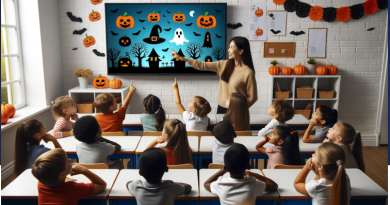A 360⁰ Approach to Student Success
Technology is transforming education, changing how, when and where students learn and empowering them at every stage of their journey.
On the path to personalized learning, technology empowers students by giving them ownership of how they learn, making education relevant to their digital lives and preparing them for their futures. With technology and access to resources beyond classroom walls, students are inspired to become problem-solvers, critical thinkers, collaborators, and creators. Where technology has been successfully integrated into classrooms, students develop a lifelong love of learning.
Educators are always striving to personalize learning for students. Technology can help them reach new levels with access to real-time student data, longitudinal information, content, apps, and more. Technology can help educators create blended learning environments and leverage digital tools for formative and summative assessments, bringing new models for learning and teaching to classrooms.
Technology in education and the right devices in students’ hands helps prepare them with the career and technical skills they need to be successful today and in tomorrow’s workforce. Relevant learning experiences in STEAM can inspire creativity, help students apply meaning to their learning, and prepare them for future career opportunities and jobs that haven’t even been created yet. Specific skills in coding, programming, physical computing, and computational thinking have become common requirements in the workforce. Though making, students can gain these skills and hone their problem-solving and critical thinking skills for the 21st century. Learning by doing with maker mindsets and environments can be very engaging when designed and integrated with the right technology.
School systems have the hard decision of choosing devices and technology models that will help achieve their visions of transforming learning. Device decisions should be made by working with multiple stakeholders and evaluating how educators and students use the devices for day-to-day learning. Stakeholders should take into account the appropriate grade-level curriculum, content needs, and how the devices will be used inside and outside the classroom. It’s no easy task, but considerations such as compatible digital curriculum and content, assessment requirements, manageability options, security features, device functionality, and the overall cost of ownership are key to choosing the right device. A secure and robust IT infrastructure is the foundation of a 360⁰ learning experience, and supports digital content, protects key student data, boosts operational efficiency, and provides the security and privacy protection of today’s schools’ needs.
Intel can help school systems enhance the experience of each student and educator with a holistic solutions approach that focuses on technology to enable personalized learning, connected, and efficient classrooms, and a secure, powerful IT infrastructure. All the while, educators must be properly trained and supported through ongoing professional learning resources and communities.
It all adds up to a transformative and sustainable impact on the success of all students.
Source:https://www.intel.com/content/www/us/en/education/technology-in-education-for-learning-and-teaching.html




